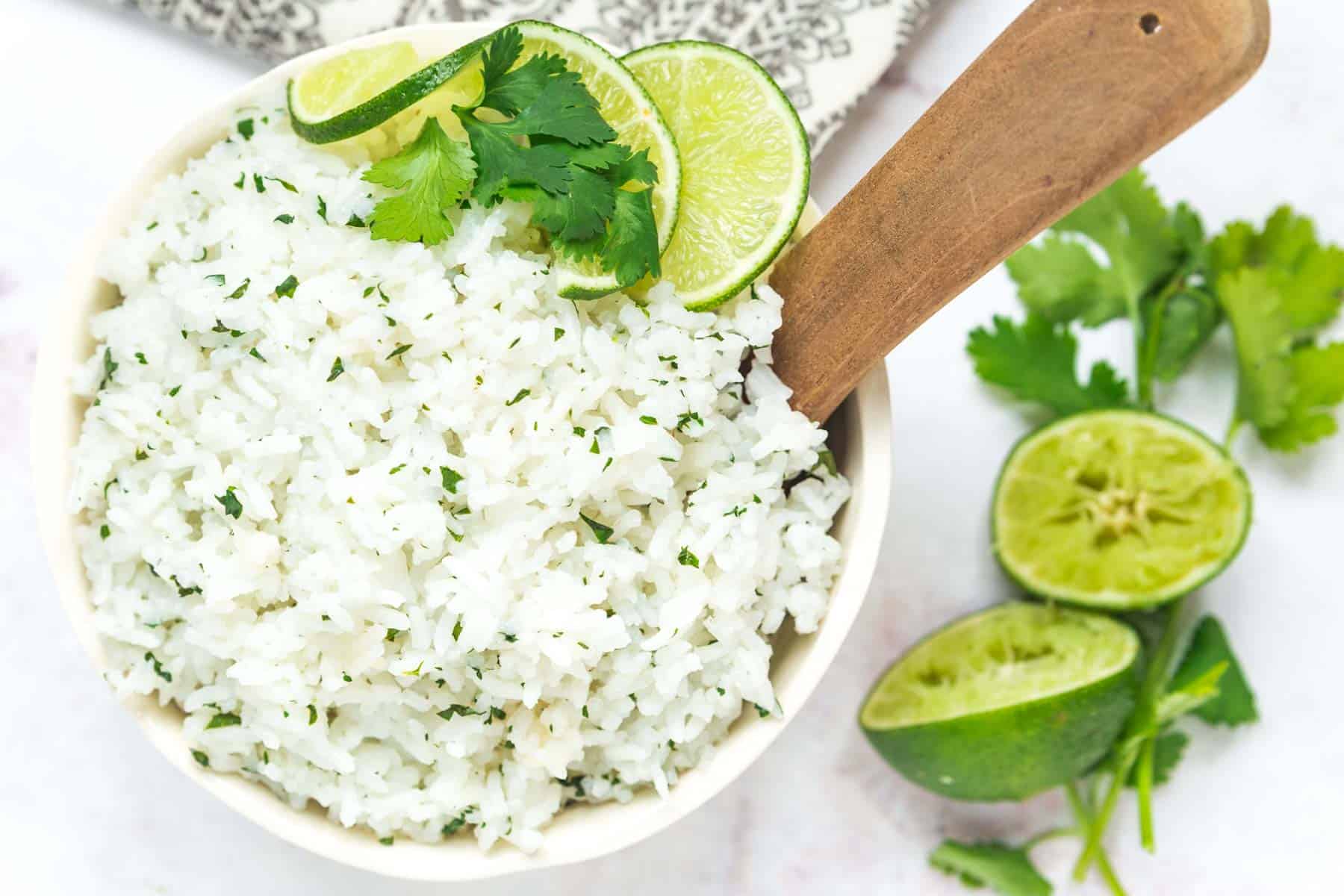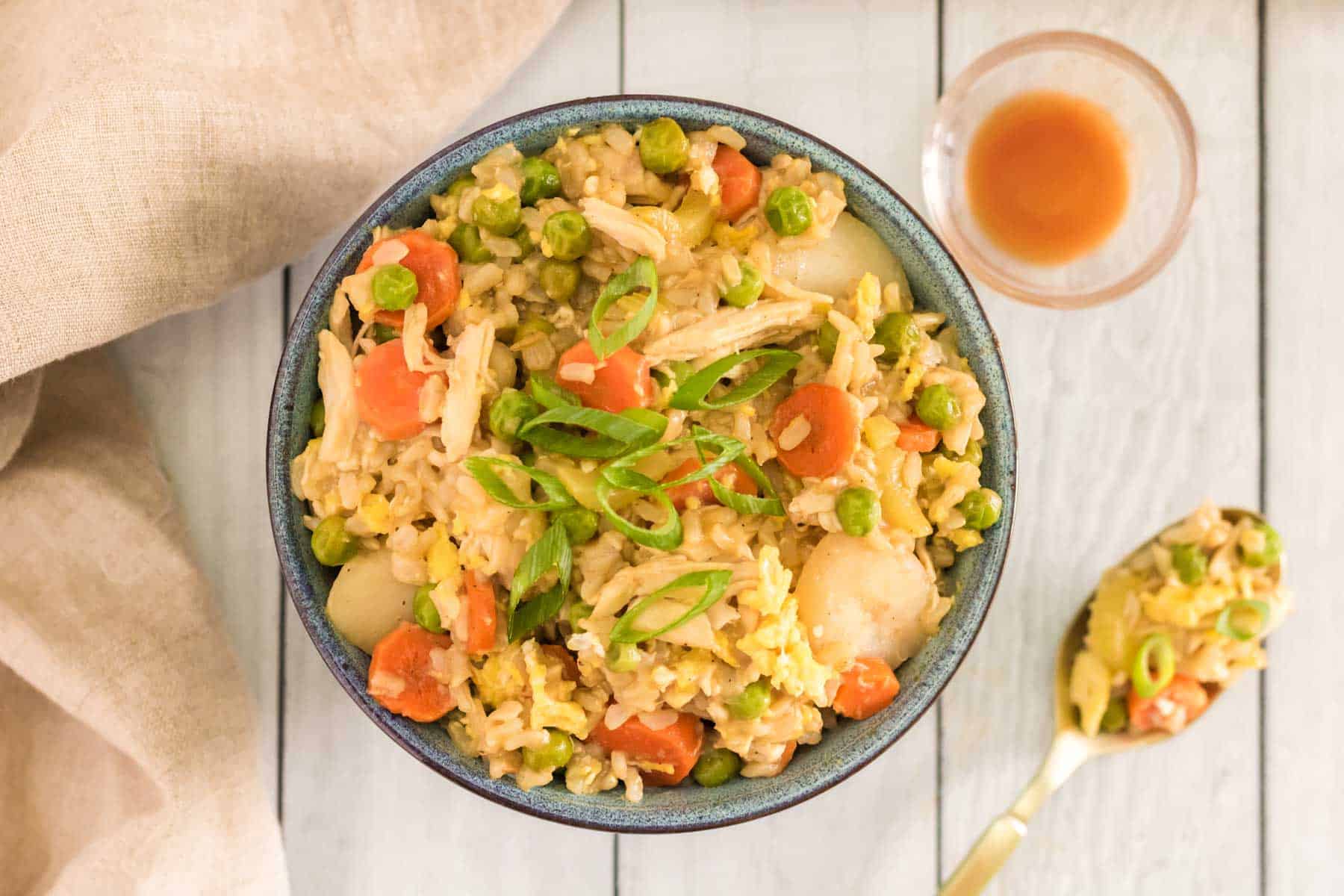


Here is everything you need to know to answer your question “Is rice gluten free?“, including the most common varieties of rice and cross-contamination risk.

Whether you’ve been gluten free for years, were recently diagnosed with celiac disease, or are just looking to limit your consumption of gluten for health reasons, it’s important to know which grains are safe to eat. Rice is a common grain in all kinds of gluten-free products, from all-purpose flour blends to baked goods to salty snacks.
But is all the rice you can buy at the store actually gluten free? And is it safe for people with celiac disease to eat in large amounts? Use this guide to understand how much gluten is in rice and whether you can safely keep these grains in your diet.
To get the short answer out of the way first, yes, rice on its own is a naturally gluten-free grain.
While gluten-free eaters have to avoid other popular grains like wheat, barley, and rye, rice does not contain any gluten protein on its own. However, that doesn’t mean that every dish or product made with rice is 100% gluten-free. When grocery shopping or eating any meal you didn’t make yourself, it’s always best to carefully read the label and ask about the ingredients. It’s all too easy for gluten-containing ingredients to sneak into a rice-based dish.
For example, some boxes of heat-and-eat rice that comes preseasoned are made with malt extract or soy, both of which can contain gluten. Read my Gluten-Free Food List – What You CAN Eat on a Gluten Free Diet for the full list of celiac-safe ingredients.
Related: Are Oats Gluten Free?

There are dozens of varieties of rice, from pearly white to multi-colored blends. Here are the most common rice varieties you’ll find in the US:
White rice is the most common variety. You’ll find short- medium- and long-grain white rice. Flavor-wise, this grain is pretty mild, which makes it a nice side dish for flavorful meals. White rice has been processed to remove the bran and germ, which makes it less nutritious than brown rice.
White rice is more highly processed than brown, which means it may have more exposure to gluten contamination. If you haven’t made it much, you can see how to cook white rice using five different methods – stovetop, slow cooker, Instant Pot, microwave, and rice cooker.
Brown rice still has the outer bran and germ intact. It has a nuttier, more complex flavor than white rice and takes up to 45 minutes to cook. Though there are other methods that are faster if you check out this post about how to cook brown rice.
Brown rice has a higher concentration of arsenic, so it should always be washed thoroughly.
Also called forbidden rice, the grains are black because of an antioxidant called anthocyanin. This is the same compound that makes beets red, purple cauliflower purple, and blueberries blue. You can use black rice in any dish made with white or brown rice. It has an earthy flavor and medium grains.
Red rice comes from India and is usually served with creamy curries and meat dishes. It has a slightly pinkish color and short grains. It looks beautiful on the plate!
Despite its name, wild rice is actually a form of sea grass, not a grain. It grows in water, like rice, and is native to Minnesota. The grains have a longer, thinner shape than rice and a black, seaweed-like color. Cooked, the grains tend to curl up and have a chewy texture. Wild rice is also more flavorful than other rice varieties, which makes it great for rice salads. And it is often used in wild rice soup.
Basmati is a long, thin white rice variety with a beautiful floral aroma and taste. It’s native to India and is often used for pilafs. Basmati has a fluffy texture when cooked. It doesn’t stick together as much as white or brown rice. It’s really delicious with dishes like Slow Cooker Butter Chicken. Learn about the several different methods to cook basmati rice so you can choose the best one for you.
Jasmine is similar to basmati rice. It’s also a floral-scented white rice that’s popular throughout Southeast Asia and the Caribbean. It’s easy to cook jasmine rice, stickier than basmati rice and is great with Thai dishes.

Sprouted rice is rice that has been soaked in water to soften the grains. This can help make the nutrients in the grains more readily available for absorption, which is beneficial for some people with gastrointestinal issues that make it harder to digest or absorb nutrients, like celiac disease (see Why Go Gluten Free?). It can also remove unwanted things from the grains, like traces of gluten or arsenic.
You can sprout rice at home. Start with any variety of whole-grain brown rice. You’ll go through a series of periods of soaking and draining. After two or three days, the grains will have opened up and small sprouts will appear. You can cook with sprouted grains or turn them into flour for gluten-free baking.
As with any grains, there is a risk of rice being cross-contaminated with gluten. This can happen if rice is grown alongside wheat or barley. It could happen during transportation, processing, packaging, shipment, or right in the grocery store if you buy from bulk bins.
The best way to minimize your exposure to gluten is to choose pre-packaged rice with a gluten-free or Certified Gluten Free label.
You may have heard that rice also contains the toxin arsenic. And it’s true that studies show rice to contain levels of inorganic arsenic, which can cause serious health problems if consumed in a large quantity.
To reduce the potential exposure to arsenic, wash your raw rice grains thoroughly in purified water before cooking. It’s best to rinse the grains until the water runs clear. Cook the grains with plenty of water. In addition, avoid a diet that relies too heavily on rice, especially brown rice, which contains higher levels of arsenic than white. Instead, mix it up with other gluten-free grains like quinoa, oats, polenta or millet.

There are so many gluten free rice recipes that you can make. Here is a quick sampling to get you started.

Welcome to Cupcakes & Kale Chips, where I share gluten free recipes & kid-tested family favorites!
